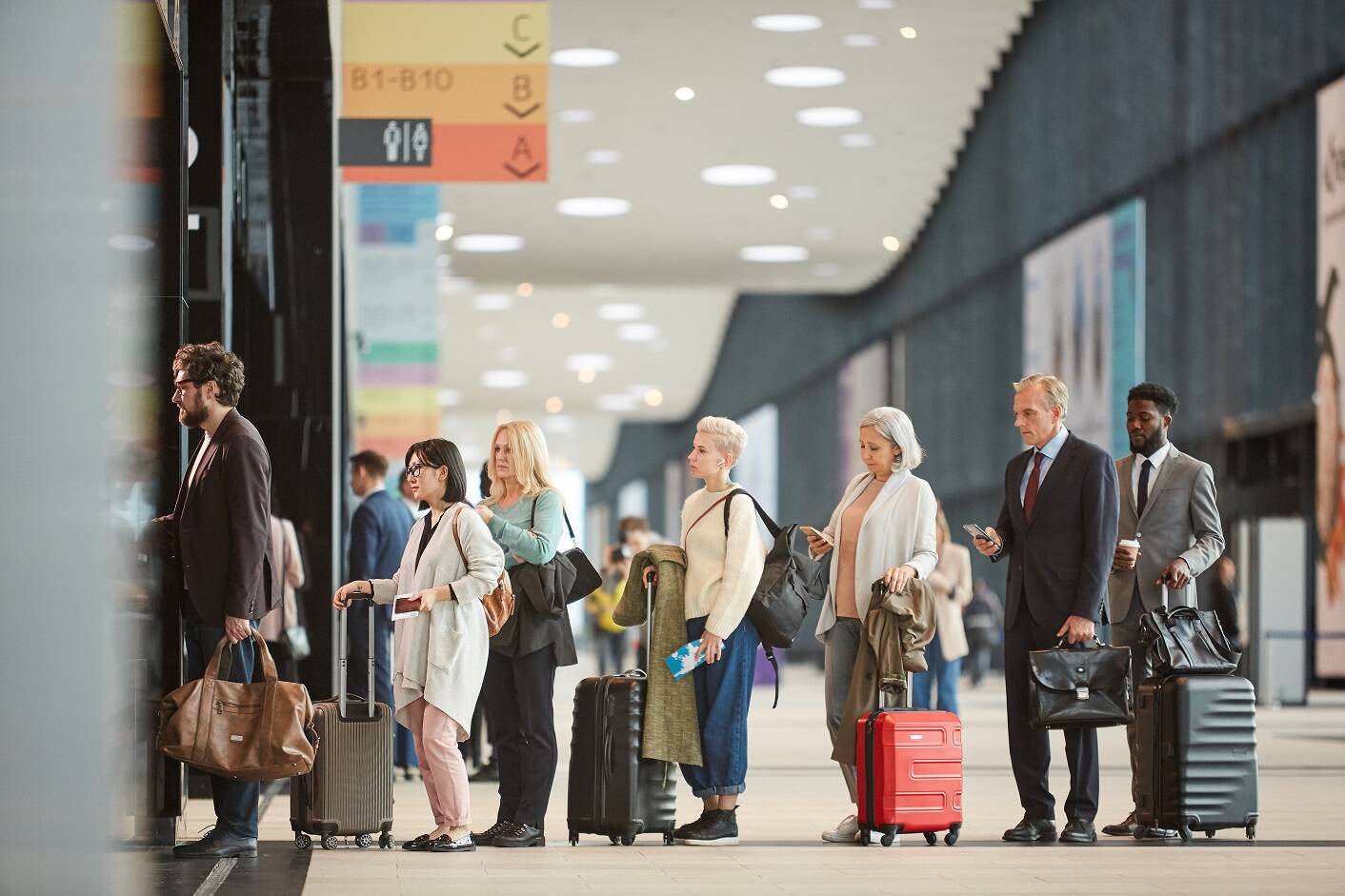

It’s almost never a calm day in an airport. 2019 saw a whopping 927 million air travelers in the US alone. This dropped to 369 million in 2020 due to the COVID-19 pandemic and grew to 674 million the year after. But regardless of pandemics or other worldwide events, airports are often packed. And what is one of the busiest departments in an airport? Customer service: your airport reception check-in counter agents, airline service assistants, concierge, and even other employees that interact with passengers on a regular basis.
Your airport’s customer service is crucial because it’s easy to forget that, as essential as they’ve become for many people, airports are a business — they need to maintain a positive brand image for customer retention. Airports regularly fight a series of problems that affect operations on both an internal and customer-facing level. But even if you can handle your internal issues well, you can still lose customers if you’re unable to reassure them that the situation is under control.
To do this, you first need to acknowledge the most common customer service challenges that plague every airport and possible solutions you can use to resolve them.
Airports are among the most developed industries. Yet, ironically, it still suffers from a lack of updated information that’s accessible to passengers. This is mainly because of two causes:
Even though some of these information issues are outside your control, passengers will look to you for the solution. After all, they expect airports to provide relief and convenience at times of confusion.
Whether the information issue is within or outside your control, resolving it is always of utmost concern. But while you can pluck out each issue as it arises, the best solution is to start from the root.
For instance, if your website struggles to provide up-to-date flight information, discuss with the website backend department to identify the best solution (e.g., migrating to a faster server, optimizing web page elements, etc.).
However, if passengers acquired wrong or inaccurate information from travel agencies, you need to have the initiative to dispel this info. Of course, what a travel agency tells your customers is beyond your control, but it helps a lot to be proactive.
Here are some ways you can proactively put out correct information while reducing the spread of the wrong details:
Things sometimes don’t go according to plan. Even though a lot of planning goes into managing airport operations, there’s always something that will go awry. Some examples include:
Again, even though these usually happen outside your control, passengers expect you to solve them immediately.
Unlike information issues, it cannot be helped if unexpected circumstances happen as they do. Whatever situation you may face, it all boils down to how well you can help your customers cool off.
Of course, it’s significantly more effective to be more specific in how you calm down your passengers than simply telling them, “It will be alright.” Anticipate unexpected situations and come up with ways you help your customers relax.
For instance:
It’s best to look back on any history of common frustrations of passengers and discuss any issues that your customer service will have to deal with with your operations departments.
One of the most common complaints about airports is the waiting time. Nowadays, airports have been able to improve their workflow and provide a smooth experience for passengers. Unfortunately, there are still times when passengers have to wait at least two hours in queue for customs or security checks. In fact, some passengers would go to the airport much earlier than they have to be to anticipate the long wait and avoid missing their flight.
While this has been the norm, in an industry where providing a positive customer service experience is vital, this is something you should never let happen.
There are two effective approaches to resolving excessive waiting times:
First, you can actively eliminate the waiting time for a faster experience. To do this, consider these three issues that can lead to long waiting times:
1. Understaffing. A lack of customs agents or airport agents can place severe bottlenecks in the flow of passengers.
Solution: Evaluate your staffing model and determine whether you need to hire more staff or modify the shift schedules.
2. Outdated equipment. Processes like visa verification or security checks can become slow if your facilities become slower or break down.
Solution: Audit your equipment. Observe their performance and decide if you need to replace them.
3. Volume of passengers. Put simply, a lot of passengers at the same time naturally lead to longer waiting times.
Solution: Actively anticipate and plan for holidays or dates when a large volume of passengers can be expected (e.g. perform equipment maintenance in advance; brief employees to get ready).
The second approach is simple yet effective for the long-term: set clear expectations for your passengers. A 2019 report by Airport Delight found that 77% of passengers prefer to have accurate information on waiting times. Passengers are often more patient if they know why they have to wait long. Otherwise, they’re more likely to be frustrated if they’re left in the dark.
Thus, you have to strive to actively provide updated flight information to your passengers. They may still complain about the long wait, but less vehemently than if they were kept in the dark.
A 2020 study on customer experience in airports confirmed that airport staff have a vital role in engaging passengers throughout their interaction with your airport. Regardless of the challenges you face, your staff can have a significant impact on your customers.
The same study, however, discovered that customer care service — the department that actively assists passengers with issues in flight schedules, baggage handling, checking in, and other factors — has been receiving negative attention due to attitude problems among staff. While passengers have shifted their focus from customer service to health protocols due to COVID, customer service may eventually become a point of emphasis again over time.
In any case, this means that customer care service is a crucial component of your airport that you must address to achieve high customer satisfaction.
The impact of attitude problems in customer-facing interactions is only a symptom of a bigger issue: stress in the workplace. Airports face a high volume of customers regularly with almost no downtime. This means that your staff has to be on their toes all the time under the expectation they should never perform for less than their best.
If you think about it, the woes of your airport staff make sense: it’s their way of venting their exhaustion. In the long run, however, this can lead to burnout and deteriorating performance if left unchecked.
A 2017 report on airport staff turnover found that increasing wages is an effective way to reduce turnover and increase performance. This implies that compensation is directly correlated to job satisfaction. Thus, one way you can help in reducing their stress is by raising their salary.
However, there are alternative options if modifying their compensation is unavailable as an option. Here are some effective ways you can resolve workplace stress among your airport staff:
While there are other challenges that airports face, the area of customer service has some of the most pressing issues you have to address. Resolving these problems is critical to maintaining the customer experience and bottom line of your airport.
Thus, it’s best to use all the tools at your disposal to deliver the best customer service experience that your airport can offer. While you may have discovered a way to best optimize your workflow and policies, you can still take it one step further with the right tools. For instance, you can use a virtual agent platform like WelcomeWare to enable your concierge or airport check in counter agents to work from home. This allows them to eliminate the need to travel, giving them the necessary energy and focus in the ever-busy workplace of the airport.